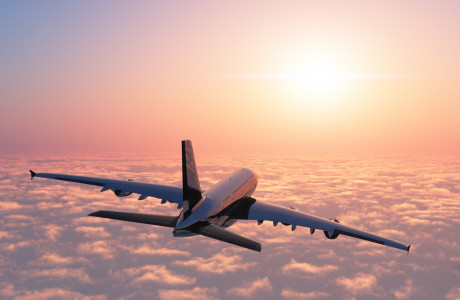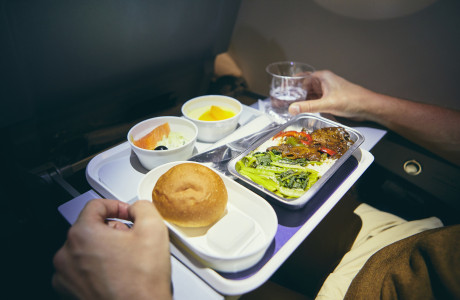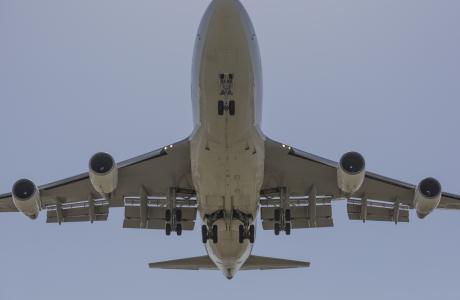
Boeing 747
The Boeing 747 is probably the most famous passenger aircraft in the world. The aircraft with the distinctive hump is the world's first wide-body aircraft and coined the term jumbo jet. Since its maiden flight in 1969, the model has performed quite a few other tasks in addition to countless passenger flights: For example, two Boeing 747s transported space shuttles, while other aircraft have served as Air Force One, the plane of the President of the United States, since the 1990s. Finally, the last Boeing 747 was delivered at the end of January 2023. What other notable events are there in the eventful history of the "B747"? What are the special technical features of Boeing's jumbo? And in what way is the Boeing 747's relationship with Lufthansa special? In the following text, you will learn everything you need to know about the world-famous 747 aircraft.
Contents
Boeing 747: History and Trivia
As the first jumbo jet in history, development of the Boeing 747 began in the 1960s. The process was spurred by a request from Pan Am, the dominant airline at the time, with the goal of reducing the cost per passenger by increasing transportation capacity. The sheer size of the project is illustrated by the fact that Boeing had to build a factory specifically for the construction of the 747 in Everett in the USA - to this day, it is the largest building in the world by volume!
Since then, the model can look back on an eventful history. It initially proved useful that the 747 was regarded as particularly prestigious among aircraft and that airlines therefore bought the Boeing 747 even when economic reasons argued against it. If seats remained empty in the 747, the effective cost model per passenger was quickly reversed. Coupled with the high recognition value of the Boeing 747's hump, its presence in numerous films such as Air Force One or Die Hard 2 also contributed to its iconic status. Thus, with the help of improved variants of the aircraft, Boeing was able to survive economically more difficult times for a long time. It was not until 2022 that production of the Boeing 747 was finally discontinued due to the aftermath of the Corona pandemic and decreased demand for extremely large passenger aircraft - the last aircraft was delivered in 2023.
Technical and Economic Data of the Boeing 747
Boeing 747 length: Depending on the model, a B747 measures 56.5 m to 76.25 m.
Boeing 747 weight: Depending on the model, the maximum takeoff mass is 333,400 kg to 447,696 kg.
Boeing 747 fuel capacity: Fuel capacity ranges from 183,380 liters on the 747-100 to 242,470 liters on the 747-8.
Boeing 747 Speed: At cruising altitude, the Boeing 747 reaches speeds of 895 km/h to 920 km/h, which is about Mach 0.85. At takeoff, the speed is about 300 km/h.
Boeing 747 Seating: The number of seats varies by both model and individual configuration. The average number of seats in a Boeing 747 ranges from 366 to 467. Seats can be provided for a maximum of 605 passengers in the largest model, the Boeing 747 8.
Boeing 747 Price: Of course, due to the long history of the Boeing 747, costs have fluctuated greatly over the years. Most recently, a new model cost around 250 million euros.
Variants of the Boeing 747
Since the first 747, there have been numerous variants both in series production and as one-offs. The most notable are presented here.
Boeing 747-100
The first model of the long series, of which a total of 205 aircraft were built. In the wake of the oil crisis in the 1970s, numerous aircraft were put into storage and converted from passenger planes to freighters.
Boeing 747-400
With a total of 694 aircraft, the Boeing 747-400 represents the most frequently built version of the 747. Until the Airbus A380 was built, it was the largest passenger aircraft in the world. Compared to previous versions, the cockpit of this Boeing 747 was reduced in size to allow operation with only two pilots. While most airlines no longer use the model, the Boeing 747-400 is still in regular service with Lufthansa as of 2023, with 614 flights in the first quarter of the year alone.
Boeing 747-8
The largest 747 is the Boeing 747-8, sometimes incorrectly referred to as the Boeing 747-800. It can be seen as a response to Airbus in the Boeing 747 vs. Airbus A380 battle. Like Airbus, however, Boeing misjudged the situation: instead of the original estimated demand of 960 aircraft by 2025, only a total of 155 aircraft were built and delivered. Incidentally, Lufthansa's 19 active Boeing 747-8s currently make the Kranich airline the world's largest operator of the 747 as a passenger aircraft.
Cargo variants of the Boeing 747
As a cargo variant, the Boeing 747 enjoyed great popularity throughout its production period and continues to be in service. In addition to converted models, there are also dedicated cargo aircraft that allow cargo to enter the aircraft through an upward-opening nose door in the nose of the aircraft.
Shuttle Carrier Aircraft (SCA)
In 1977 and 1991, NASA converted two Boeing 747s into Space Shuttle Carrier Aircraft (SCA). In this variant, the 747 carries a space shuttle virtually "piggyback". They were used for the duration of the Space Shuttle program to transfer them between their launch and landing sites.
By the way: You can watch the launch and landing of a Space Shuttle at the Knuffigen Airport.
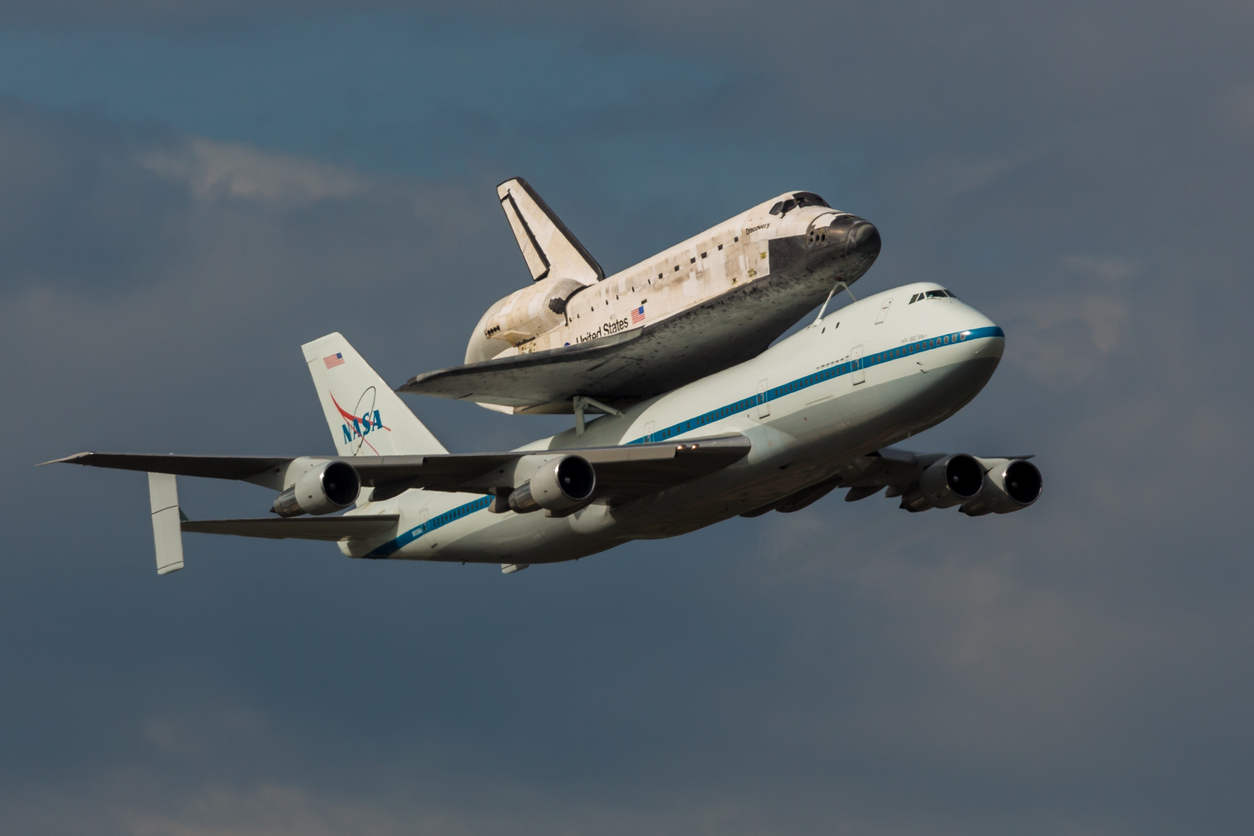
Stratospheric Observatory for Infrafred Astronomy (SOFIA)
This flying telescope based on a Boeing 747-SP was developed in cooperation between NASA and the German Aerospace Center. After a test and development phase, the telescope operated from 2014 to 2022, but was then discontinued due to excessive operating costs.
747 supertanker
Evergreen International Aviation developed several firefighting aircraft from old Boeing 747 aircraft. As a result, they represented the largest firefighting aircraft in the world. However, due in part to the dissolution of Evergreen, they are no longer in service.
The Boeing 747 as Air Force One
Since 1990, Air Force One has also been a 747, the aircraft of the President of the United States. Strictly speaking, it is not a single aircraft, but two 747 VC-25As, with the individual registration numbers 28000 and 29000. The designation Air Force One also applies strictly speaking only when the president is actually on board. There, the incumbent has the so-called "White House" at his disposal, the front part of the aircraft with the "Oval Office aboard Air Force One," from which he can address the nation if necessary. There are also several conference rooms, sleeping quarters, a private office, a pharmacy, and shower and wash rooms. Also on board at all times are a doctor and nursing staff, as well as ample food supplies. In addition, Air Force One has a guest area outside the "White House."
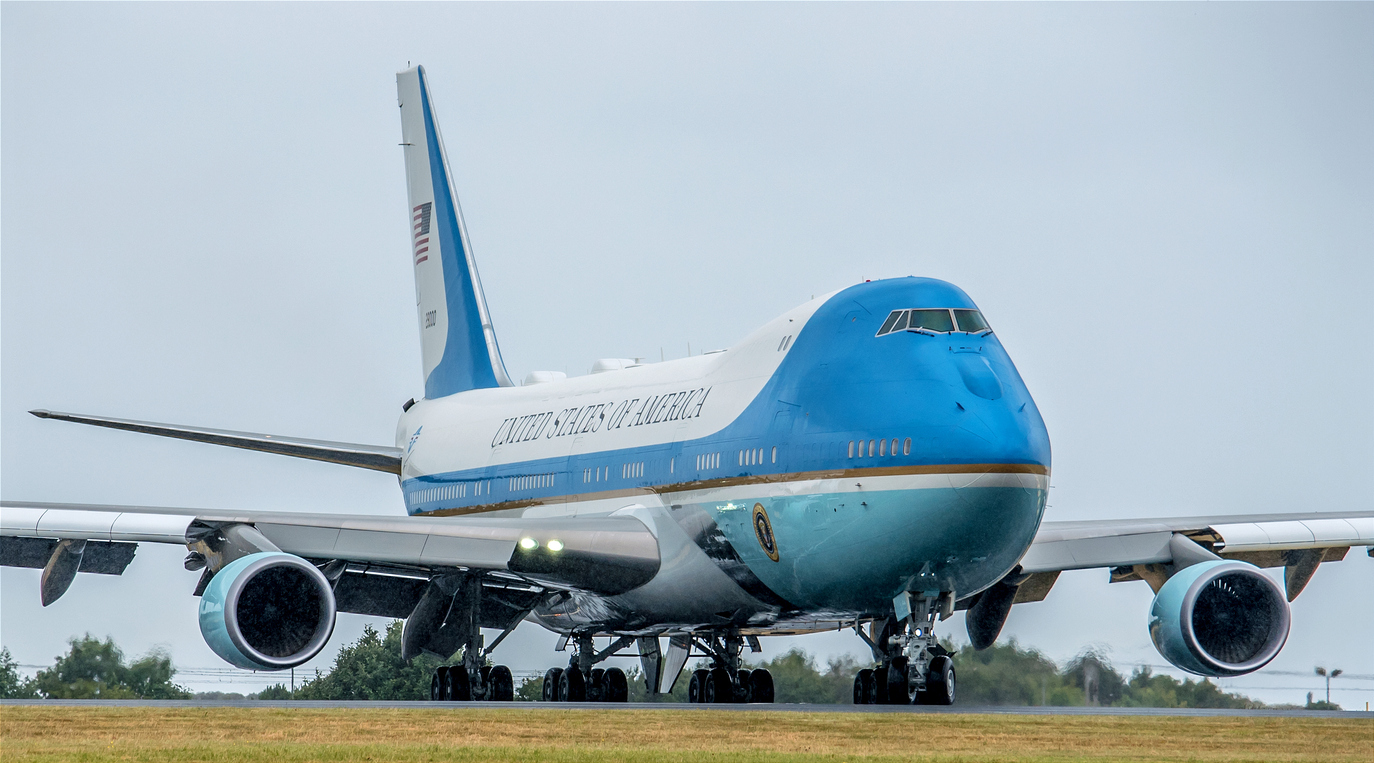
The Boeing 747 was an unsurprising choice for these roles, as the previous models of Air Force One were already manufactured by Boeing. Other Boeing 747s have already been identified as successors to the current aircraft; based on the 747-8, these will wear the Air Force One blue from 2025.
The legendary Boeing 747 still carries passengers around the world. If you should also take off with the world-famous jumbo jet, we wish you a good flight!


